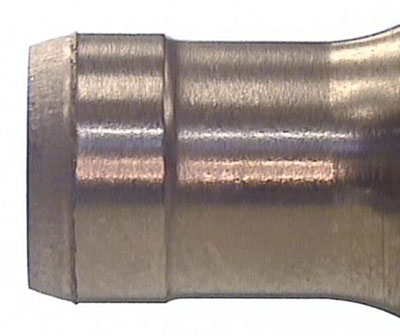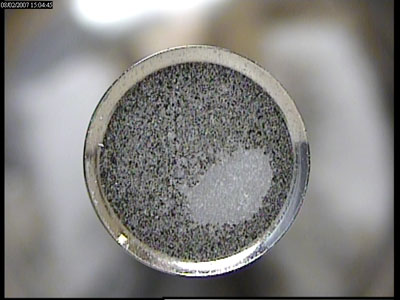The manufacture of nutraceutical solid-dose can be challenging, time-consuming and expensive. It differs from producing pharmaceutical tablets simply because of the formulas used in vitamin, mineral and food supplement (VMS) production.
In the pharmaceutical industry, one of the main difficulties most tablet producers experience is sticking of granule to the punch tip face. The ingredients in these formulations are very often synthetic and are formulated to aid compression, containing ingredients that help bind the tablet, having little impact on the tooling.
VMS, by contrast, in their natural state, can be difficult to compress as they can contain many high percentages of active ingredients, which make production problematic.
The most common multivitamin formulas can contain up to 50 active ingredients and 2–8 excipients, including coating ingredients. Pharmaceutical formulations tend to contain 1–4 active ingredients and 5–6 excipients. Owing to the high number of active ingredients in nutraceutical formulations, more consideration is required because of the characteristics of the formula. Problems related to particle size, flow, compressibility, moisture sensitivity, ingredient interaction, content uniformity and quality control (QC) testing can occur.
Some active ingredients may be available in granular form, whereas others only in fine powder form. Some may be hydrophilic and others hydrophobic. Because of this, the ingredient blend may have many different particle sizes with a variety of features including being extremely abrasive and corrosive resulting in the tooling used during manufacture becoming damaged.
Ingredient blends can also have separation and flow issues. Tablet production from these blends can result in capping, sticking and different patterns on the faces of tablets during compression, as well as basic content uniformity problems.
Tablet punches and dies are the main components that interface with the powders and granules so have to be robust both metallurgically and in terms of design to withstand the rigours of compacting nutraceuticals. VMS tablets tend to be quite large and bulky when compared with pharmaceutical tablets, especially multivitamins, this is to enable sufficient delivery of the beneficial ingredients.
They often require high compaction forces to bond the ingredients into a robust tablet, and the tableting equipment is usually run at high speeds for long periods of time to satisfy the nutraceutical industry's requirement for high output and low cost.
Choose the correct tool steel
Because of these issues tooling must withstand the demands of nutraceutical production and one of the first considerations has to be the steel used for the tooling.
The correct choice of material will help to reduce the risk of damage to the punches and dies from the effects of abrasion, corrosion and impregnation of hard granules. There are thousands of steel types available, but only a few meet the complex design and functional requirements necessary for tablet tooling.
When using tablet press tooling manufactured from low chromium steels, the impact of these materials on tooling can cause accelerated wear, as the minerals are often as hard as the tablet compression tooling steel that is used to compress them.
This means that tip face designs with features such as embossing and breaklines can be worn quickly by compressing nutraceutical formulations resulting in poorly defined and illegible logo and can cause tooling to be discarded. Tablet punches and dies are the main components that interface with the powders and granules and, as such, must be robust both metallurgically and in terms of design to withstand the compaction of nutraceuticals.
Commonly used materials for nutraceutical tooling include high carbon, high chrome cold work tool steels. Tungsten carbide is often used for the dies to prevent wear and deformation of the die bores. It features a high compressive strength with an extremely high wear resistance. This helps to reduce die bore wear and ringing and lasts longer than conventional die steels.
I Holland has a range of steels known as the I Holland PharmaGrade (HPG); this contains the premium steel HPG-P. This is an ESR (electro slag remelted) steel and is refined to give lower non-metallic inclusions and a more homogenous structure. As standard the material has a higher chromium content as well as other compositional materials that give greater wear resistance to the tooling.
Owing to its excellent wear resistance, tungsten carbide is also often used to extend the life of tablet compression tooling. Dies made from tungsten carbide help to prevent wear and deformation of the die bores. It features a high compressive strength with an extremely high wear resistance.
This helps to reduce die bore wear and ringing and lasts longer than conventional die steels. However, the disadvantages of this material is that it is very brittle and therefore its use for nutraceutical tablet punches can be troublesome, as it can result in punch tips fracturing prematurely. Certain formulations can also react with tungsten carbide and cause black spots on the walls of tablets.
I Holland’s PharmaGrade range also contains HPG-MP (Metallurgy Punches) and HPG-MD (Metallurgy Dies) powder metallurgy steels and HPG-TC tungsten carbide for dies that can help extend the life of the tooling as they have a hardness and durability that exceeds most steels.
Coatings help to improve wear
If the selection of a more wear-resistant steel alone is not sufficient for the rigours of nutraceutical tablet production, then a wear-resistant coating should be applied to the tooling.
Coating that will improve the hardness of the tooling is extremely important in nutraceutical manufacture. The ingredients used have such high quantities of hard, abrasive, sharp edged minerals that when repeatedly compressed can scrape away or penetrate the surface of the tool.
The abrasion can lead to the erosion of punch tip detail such as logo embossing and other identification specifications. Eventually, this wear can lead to weight variation, sticking and other issues resulting in the scrapping of the punch.
Traditionally, electroplated hard chromium is the most popular coating used within the tablet tooling industry but it has serious drawbacks. When hard chromium is applied to tooling, a certain amount of hydrogen penetrates the substrate, which can decrease the steel’s working load by up to 20%.

Tip wear
To counter this effect, the plated tools undergo a baking process known as de-embrittlement that reduces, but does not totally eliminate the unwanted characteristic.
It is also subject to micro-cracks which can develop during the plating process when the internal stress exceeds the tensile strength of the chromium. These micro-cracks are problematic because they provide a porous route to the substrate that will allow tablet formulas or cleaning solutions to attack the steel beneath.
To combat these issues, I Holland developed PharmaCote Extra, which is a chromium-rich coating that is applied via an advanced Physical Vapour Deposition (PVD) process. This advanced PVD process creates a very smooth (anti-stick) and dense coating, and the process incurs none of the drawbacks associated with applying hard chrome.
ECxtra is also a lot greener: hard chrome, when applied to tablet tooling, is not hazardous, but there are environmental problems associated with the plating process itself.
The main issue is the chromic acid solution used in the process, which generates a waste product containing hexavalent chromium. This has significant implications on worker safety and is under review by several agencies. PharmaCote ECxtra does not have the same environmental implications and is actually one of the most advanced coatings available in the range.
Specific coatings have been developed to combat problems in the manufacture of nutraceuticals. Because abrasion is such a major problem, I Holland is constantly seeking to improve its surface coating range, some of which have a very high hardness rating of more than 3000Hv (Vickers Hardness). These are ideal with formulations that are extremely coarse and contain particles that will affect the tooling by way of abrasion.
Get your tablet design right
Design is also an important consideration in the manufacture of nutraceuticals, just as it is in pharmaceutical production.
Good tablet design is extremely important, as it has an impact upon anticounterfeiting, tooling strength, coating of tablets, durability and functionality.
It also helps avoid tablet sticking, picking, lamination, capping or premature tooling failures right at the beginning of the process by ensuring a problem free end product, so getting all these factors right is imperative to a successful tablet.

Sticking
The tablet design can help in minimising the susceptibility to tablet tooling wear. Tablet designs where the tool profile requires a deep concave can often cause wear around the steepest areas of the concave when compressing abrasive formulations.
During the compression stage, the granule has to travel laterally across this area to form the tablet this will cause friction which abrades the punch tip face removing material with time. This can often lead to tabletting issues such as capping and delamination as the tip designs integrity in this area is compromised and ‘crowning’ can occur.
To reduce this effect a flatter tablet profile, or one that has been specially designed to reduce the effects of abrasive wear, should be used.
The process is something that should not be rushed; it needs to be well thought out and considered as good tablet design is essential to prevent downstream problems, produce high quality tablets and maximise the efficiency of the tableting process.
Make the right choice
The development of solid dose nutraceutical products into a formulation that can be compressed in a modern tablet press to form a tablet, with both speed and in quantity, can be a complex and problematic procedure.
With certain considerations and measures in place it can be achieved successfully. Choosing the correct tooling comes into its own. By choosing the right quality punches and dies problems during manufacture can be prevented.
It is important to consult with an expert tablet designer as early on in the process as possible, who can ensure that tablet designs are not only unique and visually appealing, but are also robust and producible in a rigorous tablet manufacturing environment.
Specialist advice on tool materials and coating that match with the nutraceutical formulations being compressed is also an extremely important and will save not just time but money as production efficiency is increased and failures are reduced.
